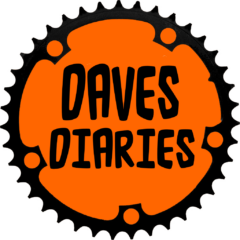Bike fit is a massive topic all by itself and there are plenty of people doing it as a profession, so what I’m covering here is the raw basics to get you started and on the bike.
- Stand over height – stand over the bike and allow at least 1 inch between your crotch and the top tube. 3 inches is the maximum you should allow, basically are you protected by clearance should you slip off your saddle?
- Knee to handlebar clearance – try this seated and standing out of the saddle. If the knee hits you need a longer stem or a frame with a longer top tube.
- Saddle height – basically you want to achieve a slightly bent leg when you are sat on the saddle and your foot is at the lowest part of the pedal rotation (6 O’Clock). When off the bike adjust the saddle to be hip height, take a ride and see how you go from there.
Have you ever heard of the ‘M’ Check?
It is a visual inspection of your bike that should be done before every ride. I tend to do mine after each ride just after I have washed my bike. As when you come to go out for a ride you just want to get on with it rather than checking the bike over. There are plenty of videos online showing you how to do an ‘M’ check, so just go onto YouTube and search for it if you need to. It is called the ‘M’ check because looking at a bike sideways on starting at the front axle going up to the handlebars, down to the bottom bracket, back up to the seat and finally down to the rear axle it takes on the letter M.
The ‘M’ Check
- Front Wheel
- Check tyre wear, cuts etc
- Spin wheel and listen for brake rub and watch for buckles
- Check it is fitted correctly and QR is secure
- Tyre pressure and rim wear
- Spoke tension
- Hubs are smooth and no movement
- Forks
- Check for dents & cracks
- Front Brakes
- Check working properly
- Blocks on rims correctly and not worn down
- Headset
- Wrap hand around headset and feel for movement
- Check handlebars are secure and straight
- Check Bar Ends
- All leavers are secure
- Alignment to front wheel
- Bottom Bracket
- Move crank arms against each other – check for movement
- Spin pedals – check they are not loose
- Check chain rings rotate straight
- Front Derailleur
- Parallel to chain rings
- Saddle & Seatpost
- Check QR tight and closed
- Check seat for movement and alignment
- Rear Derailleur
- Make sure it hangs straight
- Run through the gears – it should glide not clunk
- Rear Wheel
- The same checks as the front wheel
- Frame
- Check all over the frame for any dents, cracks or wear

